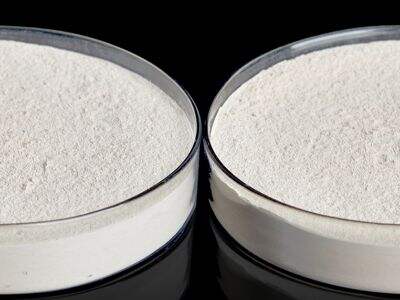These are special materials that can withstand temperatures in excess of 1000 degree C without degrading into melting or breaking form. These materials are critical because they must withstand the wear and tear of ovens, kilns, and other very hot pieces of equipment. These machines can be used continuously for years, and the future of this sector will be more bright if we protect them from heat with the help of refractory raw material by Datong.
These are derived from alumina, silicon dioxide, magnesia, and zircon. All of these pieces have some unique qualities that make them good for specific jobs. Irrespective of an alumina or a zirconia, they are best suited according to the application like alumina are good for high-temperature places and zirconia rules the rusting and corrosion. This information allows us to select the most suitable material based on different scenarios.
Preparation Of Refractory Materials For Service
In order to use refractories the right way, preparation is required to get them ready for operation. This process starts from selecting the right type of refractory raw materials that is suitable for your specific equipment. Which type you choose will depend on whether it's for bench burning or a high-temperature operation?
Once you have selected the appropriate material, it is crucial to soak it in water for at least 24 hours before installation. The soaking of the material helps in making it capable to withstand high temperatures and not burning or breaking apart. It is important that it has this function, as well as removing any air bubbles that have created in the material. If filled with air bubbles it will also have air bubbles inside of your print and they weaknesses become visible when you can heat them.
Refractory Installation
Refractory installation is a special process that must be carried out by competent and experienced professionals to work effectively. There are three major steps to carrying out the installation and these are: anchoring, dry lay and bricklaying.
Anchoring: The first step is the installation of steel anchors to ensure that the refractory materials are firmly secured. This is a crucial step, as it gives you some extra stability through the use of the product.
The Dry Lay- For the first 16″ or two layers we are able to lay out exactly where all of the refractory castable material can go without mortar. This is a crucial step to ensure that the materials are sitting as planned before the whole thing gets permanent.
Bricklaying: Last, we stack the refractory materials in a certain sequence. Such as we can set refractory bricks in the forms of herringbone, as well as checkerboard. After we have our bricks in their place, the next step is using mortar to bind them all together. This is to keep everything in place and reinforced.
Burning and Maintenance of Refractory Material
Once you have the refractory material installed, the proper curing of these materials will be very important to gain the most from your investment. Cure – Raising the temperature slowly where you slowly dry out the refractory materials to reach it’s maximum strength. This is an important step because without it, any moisture left in the material as they are getting heat up will cause cracks.
To maintain good performance of the refractory materials one more important way is to observe their condition after every short term. These inspections help us identify this damage or cracks as early as possible so we can get them fixed straight away before they become major issues. Also, cleaning the refractory materials is very important. By keeping your knives clean this will prevent any dirt or debris from causing damage, and allows them to stay in tip-top condition.
Safety Process For Manufacture Refractory Materials
As the usage of refractory materials may expose workers to dangerous situation, it is essential that certain safety measures are followed. The following are important safety precautions to take when working with these materials.
Use protective clothing that always includes gloves, safety glasses and a mask. This will protect you from any potentially irritating substances or toxic ingredients.
Ensure the work area is properly ventilated. The lungs are the filter that cleans the air and noxious gases from these materials by using external air flow.
Even break or damage refractory is found handling with care. The flavor of these gems can be subtle, so handle them delicately.
Children should always be supervised when making slime and children under 3 should not use fake snow. Making slime with indigo I have a very detailed blog post that goes through all the do's and don'ts when using fake snow. In this way you will know to use them correctly and safely.
Conclusion
The refractory materials are the main products used at jobs with high temperatures. Proper use and maintenance of assist in the effective running of equipment and offers longevity. You should have a good grasp of what refractory materials are made from, how they are designed and put in use, and how to keep them well-maintained. This measures will enable our equipment be safe and operate effectively.
 EN
EN
 AR
AR HR
HR CS
CS DA
DA NL
NL FR
FR DE
DE EL
EL HI
HI IT
IT JA
JA KO
KO NO
NO PL
PL PT
PT RU
RU ES
ES SV
SV TL
TL ID
ID LT
LT SR
SR SK
SK UK
UK VI
VI HU
HU TH
TH TR
TR MS
MS GA
GA CY
CY AZ
AZ LO
LO LA
LA MN
MN NE
NE MY
MY KK
KK UZ
UZ

